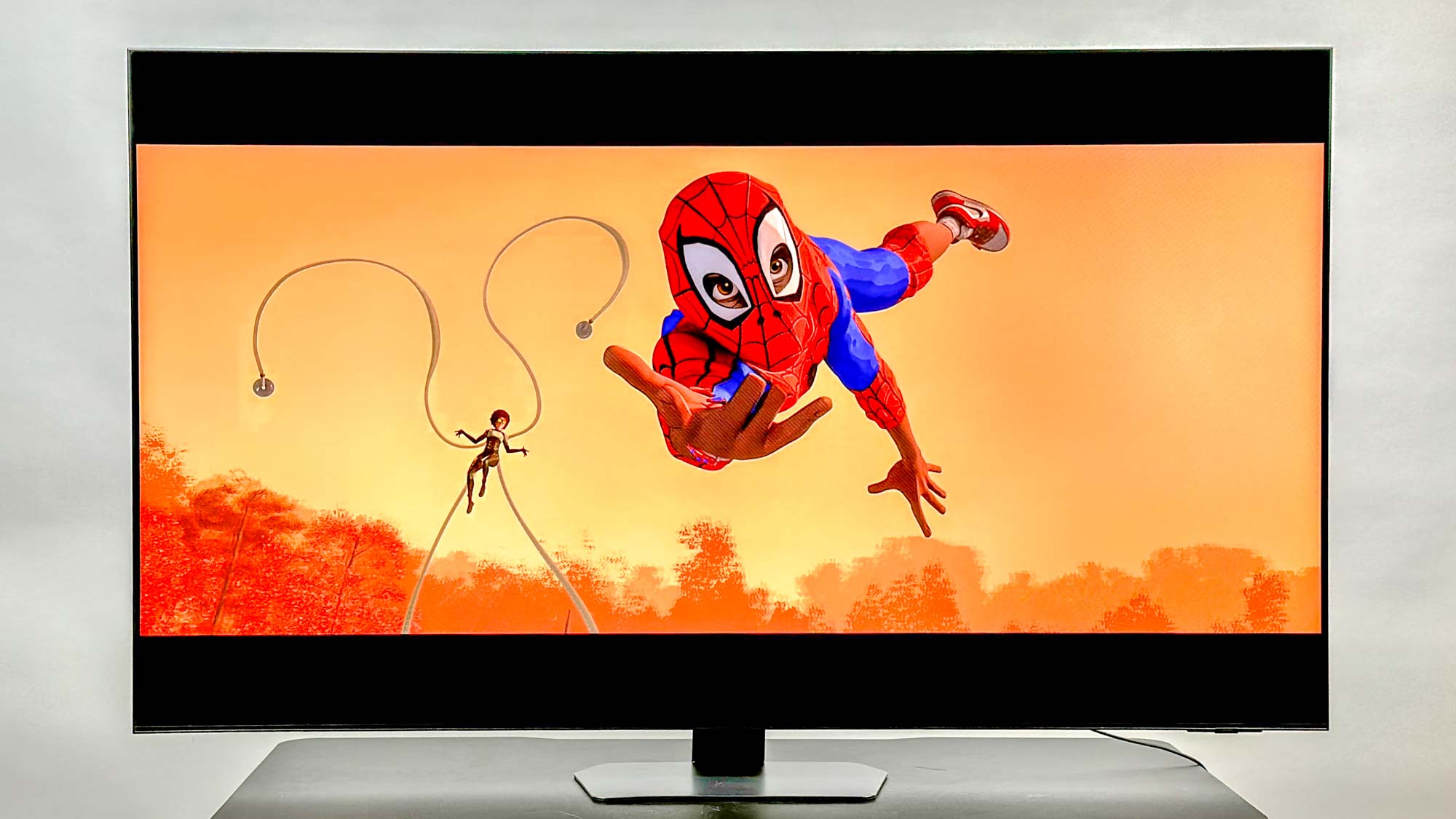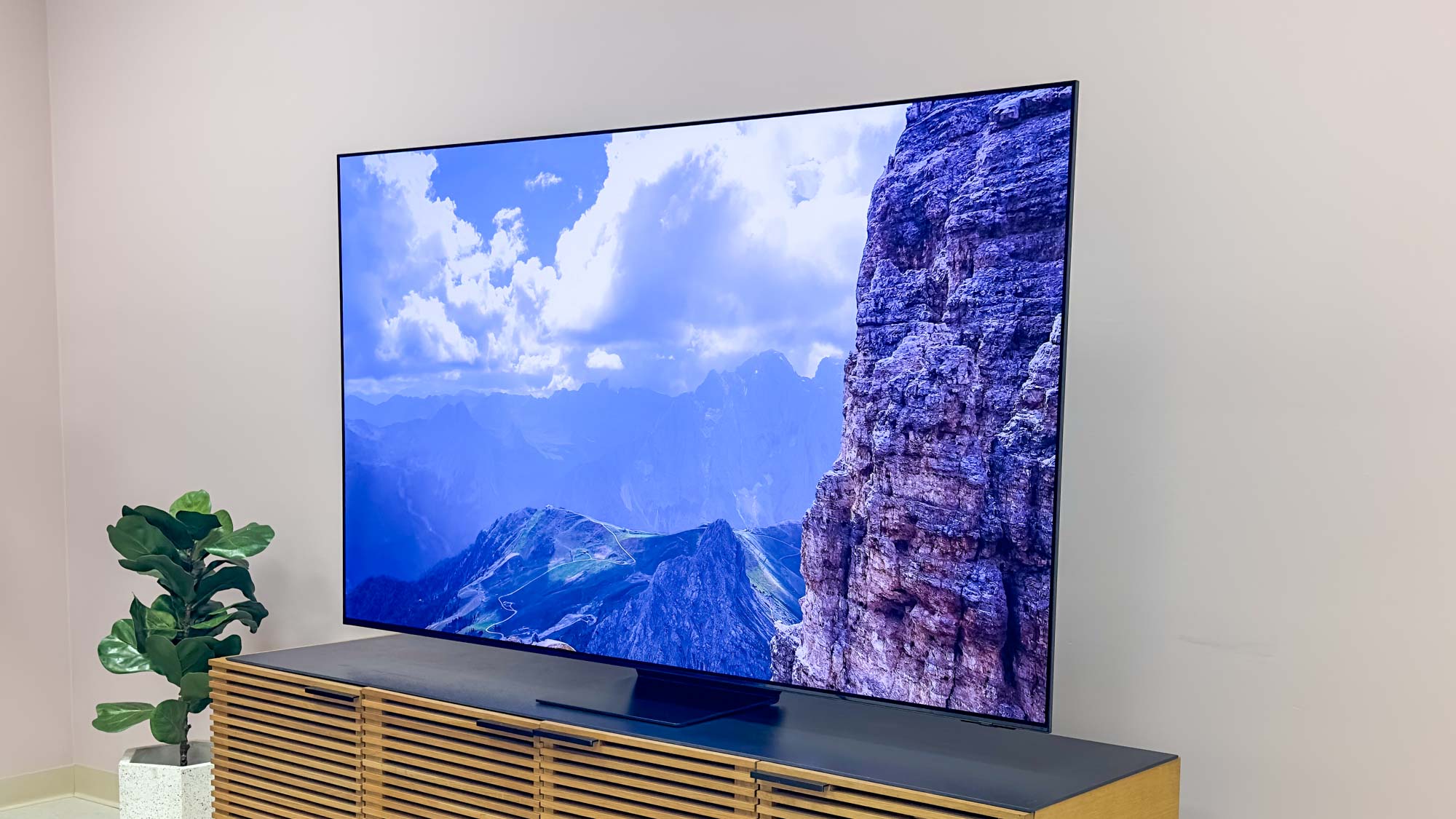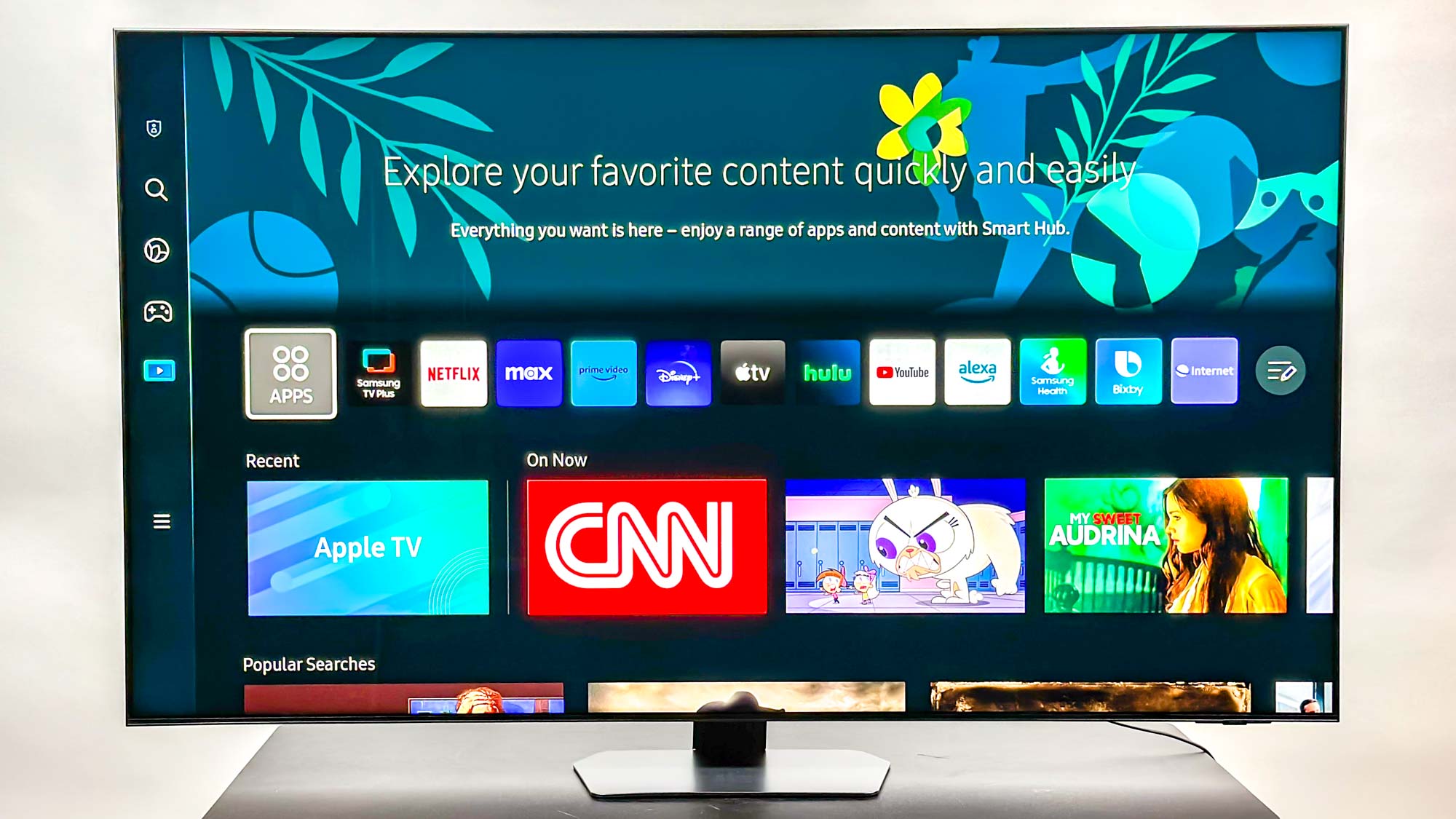
If you’re shopping for a new TV this year, it’s likely a couple of Samsung TVs will come up in your research. Samsung is one of the best TV brands, after all. But having tested two of the company’s current-gen premium TVs — one with OLED technology and the other with Neo QLED-branded Mini LEDs — there are clear differences between which to get.
The Samsung S95C OLED TV is a full-featured unit that earned a rare 5/5 star rating in my full review based on a combination of benchmark and anecdotal testing. The Samsung QN90C Neo QLED TV also received high praise thanks to well-rounded performance and best-in-class brightness abilities.
While the $500 price difference between the S95C OLED TV and QN90C Neo QLED TV (for the 55-inch and 65-inch sizes, at least) there are other things I would consider if I were going to buy one of them for myself.
Comparing brightness

One of the key benchmarks we run for every TV review is the unit’s peak brightness levels. High brightness means a TV is better equipped to battle glare caused by ambient light, either from sunlight or light fixtures in your home. Brighter images are also easier to see and can deliver stronger contrast, given the TV has the proper processing.
Comparing QLED vs. OLED TVs, the latter tend to lack eye-catching brightness in favor of ultra-accurate shades of black. But by adding quantum dots to the OLED panel in the S95C (also known as QD-OLED), Samsung changed my expectations. The S95C reached approximately 1,370 nits in the same 10% in standard mode with HDR content. That’s fantastic for an OLED TV.
That said, you’ll still get a brighter picture from QLED TVs. If I needed a TV for my living room, which gets direct sunlight for a couple of hours in the afternoon, I would be sold on the QN90C’s tested 1,990 nits brightness in the same window.
Is gaming a priority?
Many of the best TVs these days are also the best gaming TVs, outfitted with a dedicated gaming hub and a number of features that make for an immersive gaming experience on bigger screens. We measure the lag times of every TV on our bench to get a sense how responsive gamers can expect that experience to be.
The QN90C measured a lag time of 9.7 milliseconds, while the S95C measured just 9.2 milliseconds, which is pretty much the fastest we’ve ever seen for a TV. In any case, most users would be hard-pressed to notice the difference. Instead, I’d recognize the S95C’s 144Hz refresh rate when hooked up to a PC. This makes Samsung’s OLED TV operate more like a true gaming monitor.
Size matters

When people ask me for TV recommendations, the first thing I ask is the size of TV they want. In general, I think you should buy the largest unit possible without throwing off the proportions of your room. Either way, it’s good to have options.
Unfortunately, the S95C doesn’t have many options. You can only get Samsung’s OLED TV in 55-, 65-, or 77-inch configurations. While it’s true these are popular TV sizes, there is certainly a need for smaller sizes and a continuous demand for bigger ones.
The QN90C comes in 43-, 50-, 55-, 65-, 75- and 85-inch configurations. If I were in the position to splurge on a premium TV, I would probably take my own advice and purchase the biggest size possible, so that 85-inch option sounds best to me. If you’re looking for the best 55-inch TVs and best 65-inch TVs though, you’re covered by both Samsung models.
Samsung OLED vs. Neo QLED TVs
There’s a lot to like about the Samsung S95C OLED TV and the Samsung QN90C Neo QLED TV. Both perform as premium TVs should, offering a number of improvements to an existing entertainment setup.
Personally, the QN90C satisfies more of what I want from a TV thanks to its brightness capabilities and size options. But the S95C is nothing short of excellent, and is also worth getting if you're less concerned about ambient brightness and imagine gaming being central to your user experience.







